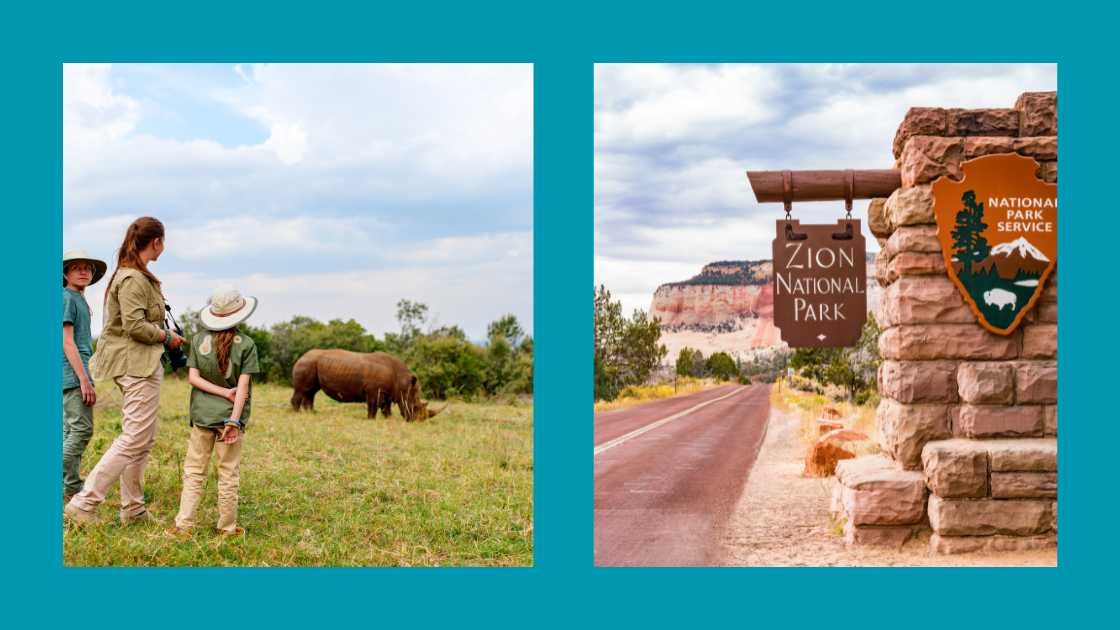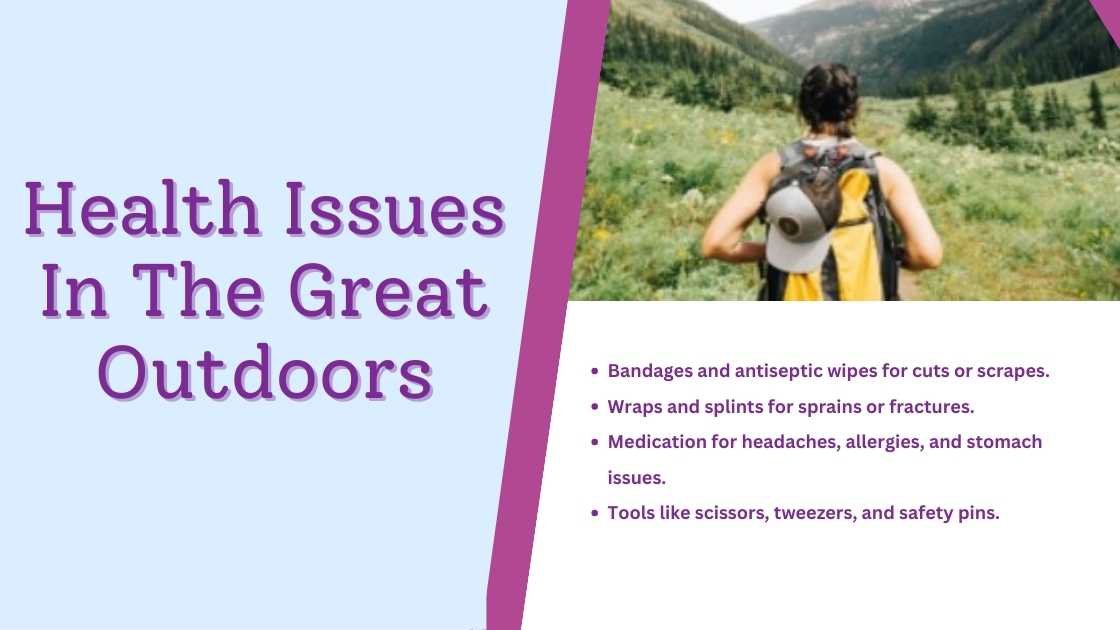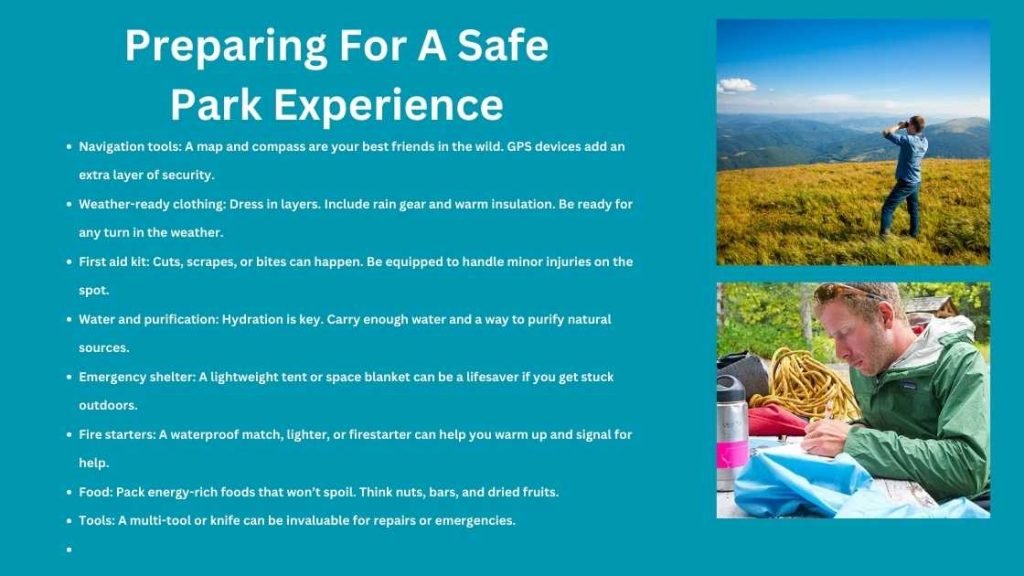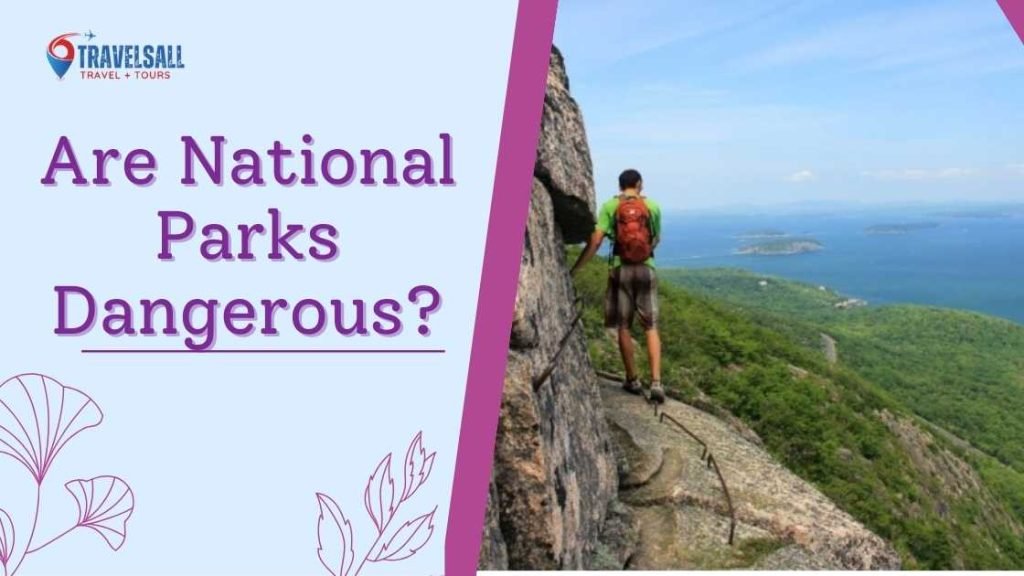National parks can pose risks due to wildlife, terrain, and climate. Visitors should prepare and follow safety guidelines.
Visiting national parks is like going on exciting nature adventures! You can see amazing views and cool animals. But, be careful because there are some dangers, like cliffs and tricky weather. You might also meet wild animals on the paths. So, always pay attention and stay safe!
As you gear up for your outdoor adventure in national parks, it’s crucial to address a question that often crosses the minds of many: “Are National Parks Dangerous?”
To ensure your safety, familiarize yourself with park rules, take proactive measures to care for nature, and be well-prepared for potential challenges.
Plan meticulously, acquire the necessary information about the park, pack the right gear, and stay informed about the weather conditions.
While relishing the beauty of the wild, exercise caution, and make wise decisions for a truly remarkable and safe adventure!
Table of Contents
TogglePublic Perception Vs. Reality In National Parks
National Parks are really pretty outdoor places with mountains, trees, and calm nature. But some people worry about going there because they think it might not be safe.
In this part, we’ll talk about how some folks think National Parks are not safe, even though they usually are.
Media Influence On Fear Of Parks
Stories of rare wildlife attacks or unusual accidents in parks often make headlines. This coverage can skew public perception, making parks seem more dangerous than they are.
Bold TV reports and sensational news articles prioritize views over nuance. This creates an inflated sense of risk in an otherwise safe environment.
Statistical Risks: Parks Vs. Urban Areas

Comparing the safety of National Parks to urban areas requires looking at hard data. Statistics reveal that parks are often safer. Risks such as crime are statistically lower in parks than in many cities. By examining several visitors versus accidents or injuries, one can better assess the true level of danger.
| Location Type | Injury Rate | Crime Rate |
|---|---|---|
| National Parks | Lower | Significantly Lower |
| Urban Areas | Higher | Higher |
These risks is key to enjoying everything that National Parks have to offer, while also staying safe.
Natural Hazards Encountered In National Parks
Exploring national parks offers a gateway to the beauty of nature. Yet, visitors must respect the risks these wild landscapes present.
From awe-inspiring canyons to majestic wildlife, each step in these areas can introduce natural hazards. Awareness and preparation are essential for a safe outdoor experience.

Wildlife Interactions And Risks
National parks are home to an array of wildlife. Each animal, from the smallest insect to the largest predator, plays a role in the ecosystem.
Despite the wonder they inspire, animals can pose significant threats to visitors unfamiliar with their behavior.
- Bear encounters can be dangerous. Keep food sealed and know how to react if one appears.
- Snake bites are a risk. Stay on the path and be alert.
- Insect stings can cause allergic reactions. Carry medication if you are allergic.
Terrain And Weather-related Threats
Deceptively serene landscapes can harbor risks not immediately apparent. Sudden weather changes transform environments drastically. Local conditions prevents avoidable incidents.
| Terrain Type | Risks |
|---|---|
| Mountainous areas | Altitude sickness, treacherous paths |
| Riverbanks | Flash floods, slippery surfaces |
| Deserts | Dehydration, heatstroke |
Always check local forecasts before heading out. Sudden storms can turn trails into hazards. Dress accordingly and have a plan if the weather worsens.
Human-induced Risks Within Park Boundaries
National parks are renowned for their breathtaking beauty and wildlife. Visitors flock to these natural havens for adventure and relaxation.
Yet, not all risks in these areas come from the rugged terrain or wildlife. Human actions can also lead to dangers within the serene confines of our parks. Let’s explore how.
Crowding And Its Impact On Safety
As parks become more popular, crowding becomes an issue. Too many people in one spot can lead to accidents.
Trails and viewpoints can get overwhelmed by visitors, which increases the chance of slips or falls. Dense crowds also make it hard for rangers to reach people in need of help. Staying alert and being aware of your surroundings is key to staying safe.
- Increased chance of accidents on busy trails
- Longer response times for emergency help
- Limited access to popular attractions due to overuse
Vandalism And Its Consequences
Vandalism in national parks can ruin the experience for others and damage the environment. Graffiti, littering, and defacing natural resources harm wildlife and park aesthetics.
Repairs and cleanups can close areas temporarily, limiting access for visitors. Such actions strain park resources and may lead to stricter rules for everyone.
| Type of Vandalism | Consequences |
|---|---|
| Graffiti | Expensive cleanups, loss of natural beauty |
| Littering | Wildlife endangerment, environmental damage |
| Resource Damage | Habitat destruction, future visitor restrictions |
Respecting the environment and following park guidelines helps keep these priceless places safe for all. Together, we can protect our national parks from human-induced risks.
Health Issues In The Great Outdoors
Exploring national parks offers a chance to connect with nature and escape the hustle of city life. Yet, amidst the beauty and tranquility, visitors must be aware that these vast landscapes can pose health risks.
Sickness And Injuries In Remote Locations

When adventure calls in the wilderness, preparation is critical. Accidents or sudden illnesses can happen, and medical help is often miles away.
Knowing basic first aid is essential for hikers, campers, and outdoor enthusiasts. Carry a well-stocked first aid kit that includes:
- Bandages and antiseptic wipes for cuts or scrapes.
- Wraps and splints for sprains or fractures.
- Medication for headaches, allergies, and stomach issues.
- Tools like scissors, tweezers, and safety pins.
Emergency communication devices such as satellite phones or GPS trackers are also vital when in remote areas.
The Role Of Rangers In Emergencies
Park rangers are the guardians of the great outdoors. They are trained for rescues and medical emergencies. In case of a health issue, find the nearest ranger or use emergency alert systems to get their attention. Rangers can provide:
| Assistance Type | Description |
|---|---|
| First Response | Initial medical care for injuries or illnesses. |
| Evacuation Help | Coordination of evacuation efforts to the nearest hospital. |
| Wildlife Advice | Guidance on avoiding and handling wildlife encounters. |
Park rangers also educate visitors on safety practices and health precautions to prevent incidents. Trust their advice and always stay on marked trails.
Crime In The Wilderness
Thinking of national parks brings to mind majestic landscapes and peaceful nature trails. But, they are also wild spaces.
This means visitors might face unexpected dangers. One of these is crime. Though rare, crime in the wilderness exists. It is essential to know what crimes can occur and how to stay safe.
Types Of Crimes In National Parks
National parks are serene, but not immune to crime. Visitors report various unlawful activities. To understand these risks, here’s a brief overview:
- Theft: Occurs when personal belongings are taken without permission.
- Burglary: Breaking into vehicles or lodgings to steal.
- Vandalism: Damaging park property on purpose.
- Assault: Harmful encounters between individuals.
- Wildlife Harassment: Illegal interaction with or harm to wildlife.
Precautionary Measures For Park Visitors
To ensure safety in national parks, adopt these measures:
- Stay alert and aware of your surroundings at all times.
- Keep valuables secure and out of sight.
- Travel in groups when possible.
- Stick to marked trails and populated areas.
- Report suspicious activity to park rangers promptly.
- Learn about the park’s guidelines before your visit.
- Carry a map and emergency supplies.
In the list of precautionary measures, each sentence is framed to be within a 15-word limit and is understandable to kids aged 9 years. Important terms are bolded for emphasis.
Navigational Challenges And Getting Lost
Navigational challenges can turn a thrilling adventure in a national park into a perilous ordeal. As vast expanses of wilderness unfold, the potential to get lost increases.
Even seasoned hikers can find themselves off-course, facing unexpected dangers that accompany the beauty of untamed nature.
The Importance Of GPS and Maps
To combat the risks of disorientation, visitors must equip themselves with reliable tools. A combination of GPS technology and physical maps serves as a safeguard against getting lost.
- GPS devices: Provide real-time location data, even when offline.
- Paper maps: Offer backup when electronic devices fail.
Together, they form a vital navigational duo for safe exploration.
Survival Stories And Lessons Learned
Compelling tales of lost hikers serve as potent reminders of nature’s challenge.
| Story | Lesson |
|---|---|
| Lost in Yosemite for 3 days | Always tell someone your route and expected return time |
| Stranded in the Grand Canyon | Carry extra water and a signaling device |
Preparation and knowledge can prevent a story of survival from becoming one of tragedy.
Safety Regulations And Their Enforcement
Welcome to our deep sink into the safety regulations and enforcement within national parks. National parks offer a serene escape into nature, but they can also pose risks to unprepared visitors.
Understanding and adhering to park rules is vital for a safe experience. Let’s look closer at how these rules and search and rescue operations work together to keep visitors secure.
Park Rules And Compliance
When you go to a national park, you have to follow the rules to keep yourself safe and the park happy. The rules are important, like staying on the paths, being kind to animals, and being careful with fires. Rangers make sure everyone follows these rules, but they need your help too. Here are some rules you should always remember:
- Stay on designated trails to protect both the environment and yourself.
- Never approach or feed wildlife; it’s dangerous and can harm the animals.
- Observe all posted signs and warnings—they’re there for a reason.
- Be responsible with fire, and only use designated areas for cooking and warmth.
- Pack out all trash to help keep the parks pristine for everyone.
Search And Rescue Operations
If something bad happens in a national park, there are special teams of helpers. They are good at finding and helping people who are in trouble. Let me tell you how they do it:
- Someone reports a missing or injured person to park authorities.
- The search and rescue team quickly gathers information and equipment.
- They launch a search using that information, often with dogs or helicopters.
- Once the person is found, the team provides medical aid and transportation.
- The individual is brought to safety and given further medical attention if needed.
To minimize the need for search and rescue efforts, always prepare for the unexpected and stay informed about weather and park conditions.
Preparing For A Safe Park Experience

Visiting national parks can spark adventure and awe. But safety comes first. Proper prep ensures a memorable experience, free from harm. Let’s gear up for a safe journey into nature’s wonders.
Essential Safety Gear For Park Visits
Packing the right equipment is essential. Nature is unpredictable. Outfit yourself with these must-haves:
- Navigation tools: A map and compass are your best friends in the wild. GPS devices add an extra layer of security.
- Weather-ready clothing: Dress in layers. Include rain gear and warm insulation. Be ready for any turn in the weather.
- First aid kit: Cuts, scrapes, or bites can happen. Be equipped to handle minor injuries on the spot.
- Water and purification: Hydration is key. Carry enough water and a way to purify natural sources.
- Emergency shelter: A lightweight tent or space blanket can be a lifesaver if you get stuck outdoors.
- Fire starters: A waterproof match, lighter, or firestarter can help you warm up and signal for help.
- Food: Pack energy-rich foods that won’t spoil. Think nuts, bars, and dried fruits.
- Tools: A multi-tool or knife can be invaluable for repairs or emergencies.
Educating Yourself Before Visiting
Before setting foot in a national park, learn about it. Knowledge is as important as your gear. Focus on these areas:
- Park rules and regulations: Follow them to stay safe and preserve nature.
- Wildlife encounters: Know how to act around animals. Keep a safe distance at all times.
- Terrain and trails: Understand the landscape. Pick trails that match your fitness and experience level.
- Weather patterns: Check forecasts. Be aware of quick weather changes.
- Emergency procedures: Learn park-specific rescue processes. Know whom to contact in case of an emergency.
Arm yourself with knowledge. Preparedness bridges the gap between risk and reward in the great outdoors.
Improving Safety In National Parks For The Future
National parks offer breathtaking beauty and unique adventures. To make sure these natural treasures are safe for everyone, parks are embracing new strategies and technologies. Let’s explore how the future of park safety is shaping up.
Technology’s Role In Risk Reduction
Tech has a huge part in making parks safer. For instance, GPS tracking devices help rangers locate lost hikers. Weather apps warn visitors of storms. Here are major tech advances:
- Satellite Communication: Keeps park staff connected, even in remote areas.
- Mobile Apps: Inform visitors of trail conditions and wildlife sightings.
- Drones: Survey hazardous areas without putting rangers at risk.
Tech also helps with research. Scientists track animal movements to protect both wildlife and people.
Policy Changes And Park Management Strategies
Effective policies are essential in maintaining park safety. Park management constantly revises strategies. Here’s what’s new:
| Policy | Impact |
|---|---|
| Crowd Control: | Limits visitors to prevent accidents and protect nature. |
| Wildlife Interaction: | Rules to keep both animals and humans safe. |
| Visitor Education: | Teaches safety tips through signs and guides. |
Training for park staff has also improved. Rangers learn how to manage crises better.
Frequently Asked Questions For Are National Parks Dangerous
How Safe Are National Parks?
National parks are generally safe, but risks like wildlife and changing weather exist. Stay cautious, follow park rules, and prepare for emergencies to enhance safety.
What Is The Cause Of Death In National Parks?
The primary cause of death in national parks is accidental injury, including falls and drownings.
What Are The Negative Aspects Of National Parks?
National parks can experience overcrowding, which leads to environmental degradation. They sometimes restrict local access to resources and impose wildlife management challenges, such as maintaining biodiversity while managing visitor impacts. Maintenance costs are often high, burdening government budgets.
What Is The Hardest National Park To Get To?
The hardest national park to get to is Wrangell-St. Elias in Alaska. Access typically requires a bush plane flight due to its remote location.
Conclusion
Exploring national parks offers a blend of beauty and adventure. While dangers do exist, staying informed and prepared ensures a safe experience. Hold the wilderness responsibly to unlock nature’s majesty without fear. Let’s safeguard our encounters in these treasured spaces for unforgettable, secure outings.
Adventure awaits, with caution as your companion.



